Some Thoughts on Starting and Going Fast Upwind in a Breeze and Chop
[caption id="attachment_4675" align="alignnone" width=""]Midwinters 2006[/caption]Originally published in the Snipe Bulletin, July 1993. Slightly modified by the Author, April 2006. Regular readers of the Snipe Bulletin need no introduction to Peter Commette. He is one of the world's best Snipe sailors and his record in other classes is even better, with a Laser World Title to his credit. As the years go on, there seem to be fewer and fewer techniques which I utilize that my competitors don't. Moreover, of those left-over techniques, there are fewer and fewer which I feel comfortable in believing give me a speed advantage. However, there still are two points of sail concerning which I can offer some help to a few. These points of sail are: escaping the starting line and going fast upwind in a breeze and chop. The key to sailing fast upwind in a breeze and chop is to keep the boat moving. This means that it is critically important to keep your lee bow clear so that you can drive off when you need speed. From this first philosophy of keeping your lee bow clear, comes a starting philosophy and a few starting techniques. I will not go into an in-depth discussion of starting, since most of you know that I am the king of OCS, and you know better than to listen to me.
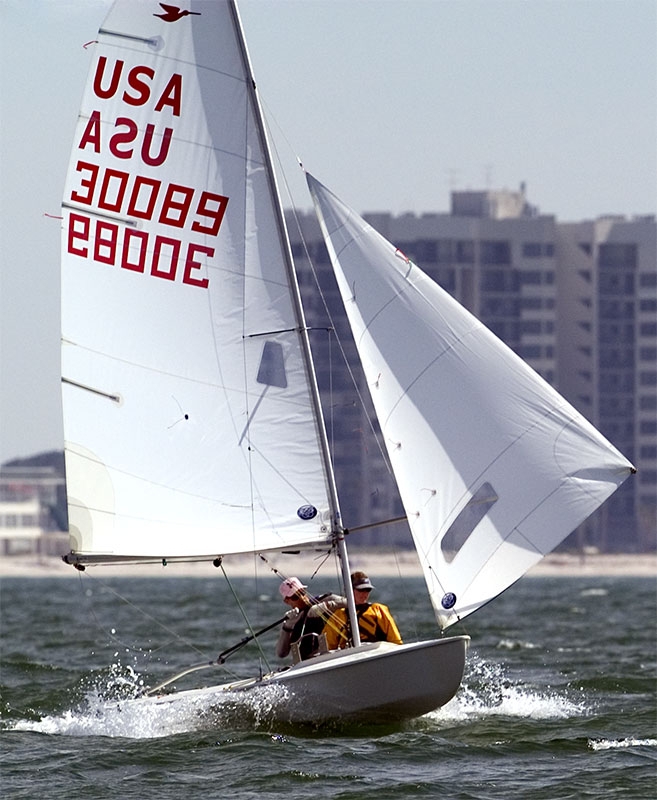

Originally published in the Snipe Bulletin, July 1993. Slightly modified by the Author, April 2006.
Regular readers of the Snipe Bulletin need no introduction to Peter Commette. He is one of the world’s best Snipe sailors and his record in other classes is even better, with a Laser World Title to his credit.
As the years go on, there seem to be fewer and fewer techniques which I utilize that my competitors don’t. Moreover, of those left-over techniques, there are fewer and fewer which I feel comfortable in believing give me a speed advantage.
However, there still are two points of sail concerning which I can offer some help to a few. These points of sail are: escaping the starting line and going fast upwind in a breeze and chop.
The key to sailing fast upwind in a breeze and chop is to keep the boat moving. This means that it is critically important to keep your lee bow
clear so that you can drive off when you need speed. From this first philosophy of keeping your lee bow clear, comes a starting philosophy and a few starting techniques. I will not go into an in-depth discussion of starting, since most of you know that I am the king of OCS, and you know better than to listen to me.
Nevertheless, one of the things that you must do in a chop in heavy air is start near someone whom you are faster than. If the better hole is to leeward of the person whom you are faster than, then take the hole, stuff yourself up as near as possible to him and concentrate on trimming in before the boat to leeward of you. If the better hole is to windward of the person whom you are faster than(I prefer this), concentrate totally on stuffing the person to windward of you and trimming in before the windward boat does. The key to trimming before
them is to listen for the sound of ratchets and watch body and eye movements.
The key to controlling the person to windward of you is to stop your boat dead, as near to him as possible, with your bow at least two feet in front of his. Don’t be afraid to push your boom out to stop your boat, and be careful of your mast coming to windward and hitting the boat to windward of you as he takes your air.
“How do you protect your hole?” some of you might ask. First of all, you want to take someone else’s. That means coming in late and setting up no earlier than one minute before the start (one and a half to two minutes in good international competition). Second, you must be alert. Watch for port tackers and boats going behind you that might want to take YOUR spot. Let them see early on that you will protect it. Make eye contact and let them know that you are watching them. When someone makes a movement for your hole, before he gets an overlap, bear off at right angles and place your boat across the hole. By placing your boat across the hole, you will either force the other skipper to look somewhere else for another hole, or when he is finally overlapped, you can get away from him by swinging your boat around through a wide arc and sailing straight upwind almost 180 degrees in the other direction back up to the boat to weather of you.
Once you start and you have your lee bow clear, start with the heavy air technique. First, it is important to point off the starting line. For that you need a straight jib stay. Sag in the headstay will hinder your pointing ability. Your cunninghams also should be loose for pointing until you are safe from the boats around you, but remember that you are going to have to hike extra hard with the loose cunninghams.
To keep your headstay straight it is absolutely imperative that your aft puller be on to the pre-bend position and your vang be set. However, if the vang is too tight, you will lose power in your mainsail. If it is too loose, the jibstay will sag when the mainsheet is eased. and your mainsail will luff up top. set the vang so there is no dprro in it when the boom is trimmed for the lightest air that you have been experiencing in the last five minutes.
While the vang is important, it’s the traveller that is the single most important key to heavy-air speed. The traveller should be kept directly underneath the boom when the boom is trimmed at its normal heavy air position. That way you will always be trimming down on your boom and thereby keep the jibstay straight. How far can you go with the traveller? I have let mine down as much as one and one half feet to keep the boat flat and the jibstay straight; at that point my jib was timmed out 20 inches (measured at right angles to the mast and marked on the splashrail).
In these conditions (chop), a correct technique for playing the waves is critical. You must look beyond your bow at all times to see the waves before you hit them. I am not a big proponent of steering up on the face of the wave and down on the back, or steering off on the face of the wave and up on the back. I save that for bigger seas in the ocean, if I bother with it at all.
I find that it is much better to look at waves as being presented to you in “blocks.” There are blocks of good waves that will not disturb your bow. There are blocks of bad waves that will disturb your bow, and there are flat spots. Each of these three conditions requires the bow of your boat to be positioned differently relative to the wind.
In the waves that disturb the bow of your boat, you have to bear off and ease the main and jib a little to get through them. I also heel my boat up a little bit, which I admit is of questionable value. Finally, the skipper and crew have to roll onto their aft thighs and lean back.
In the waves that will not severely knock my bow around I sail straight ahead on my normal course. In these waves I also keep the boat as flat as possible. Make sure you do not over-trim the jib. You need power in it and the leach free.
The waves which will not knock your bow around too much are also the key transitional waves. Not only do they allow you to bear off and get some good speed for the bad waves that are coming next, they also won’t hurt too much if you want to pinch up and get into a flat spot to windward. Flat spots are where you can really make tracks.
What I mean by saying that you can make tracks in the flat spots is that I view the flat spots as gifts. They are my free shots to windward. When I get into a flat spot I trim down extra hard on my main and pinch like crazy, sometimes carrying a little bit of a luff in the jib. Trim the jib a little tighter, too.
However, the key to a flat spot is not to be a pig. The boat cannot take this sort of pinching for too long, and, assuming that waves will be on the other side of the flat spot, you have to pull off in time to get speed before you get back into the waves.
Try the above and let me know the results. Good Luck! ! !
Leave a reply
Your email address will not be published. Your comment will be revised by the site if needed.

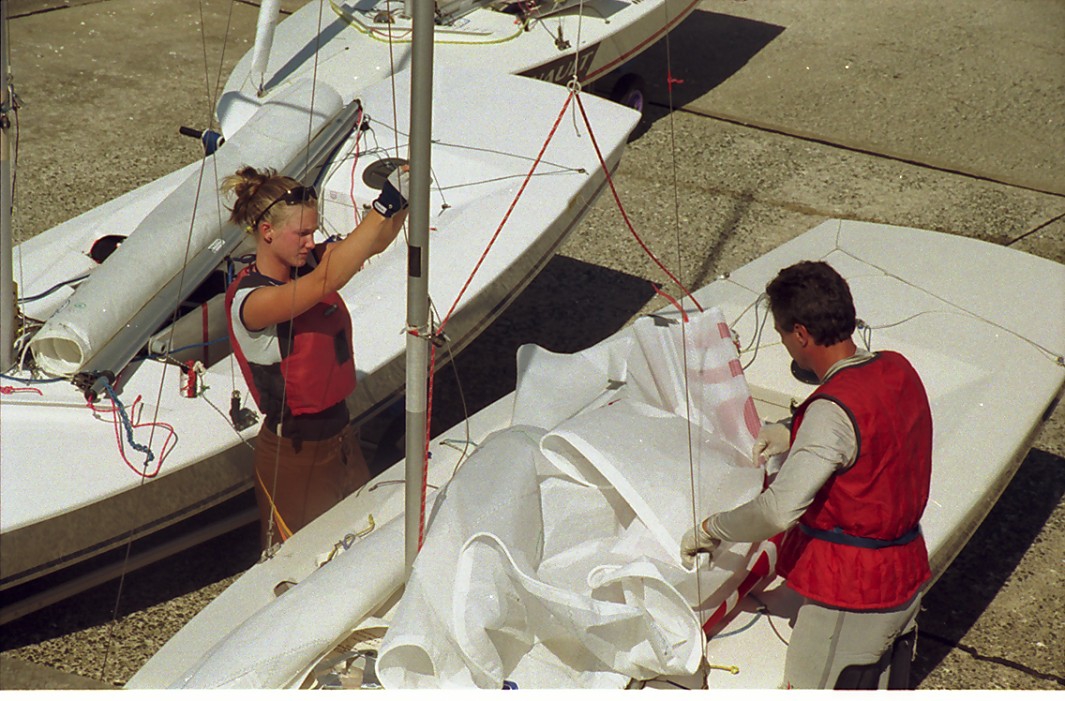

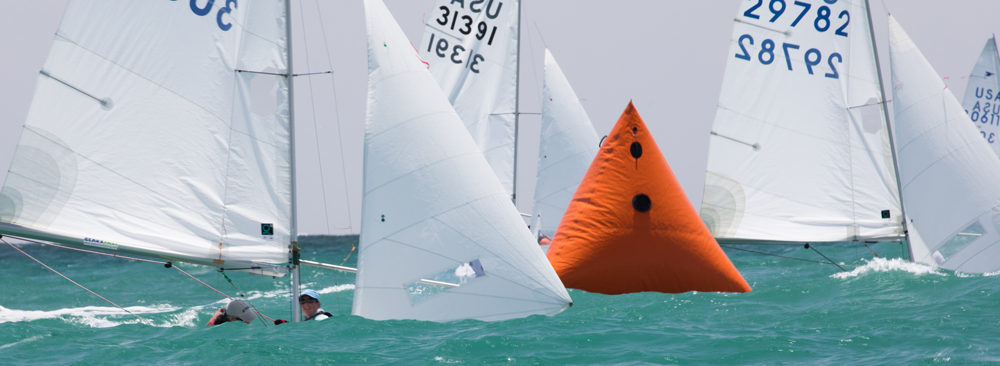
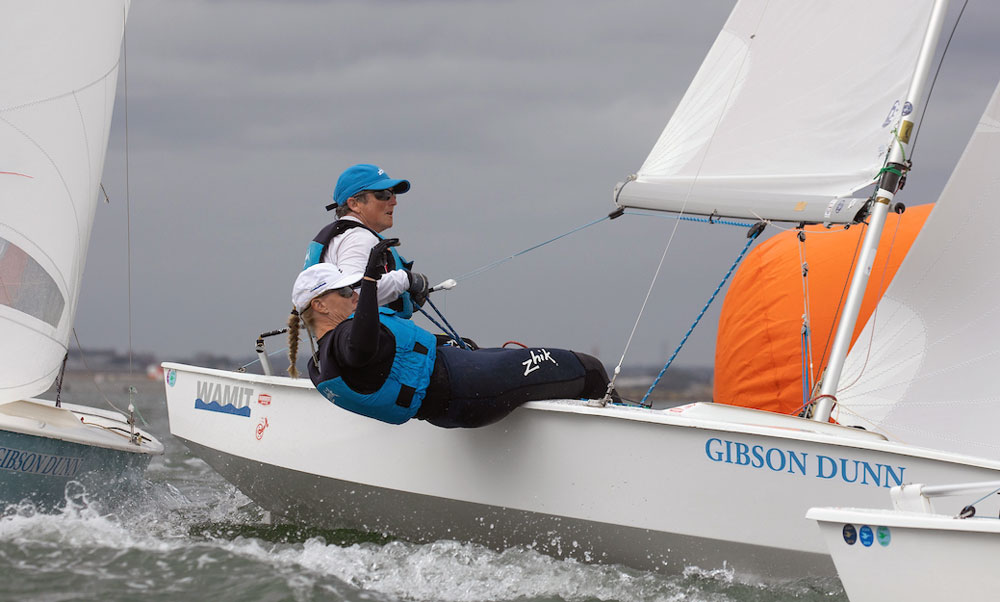
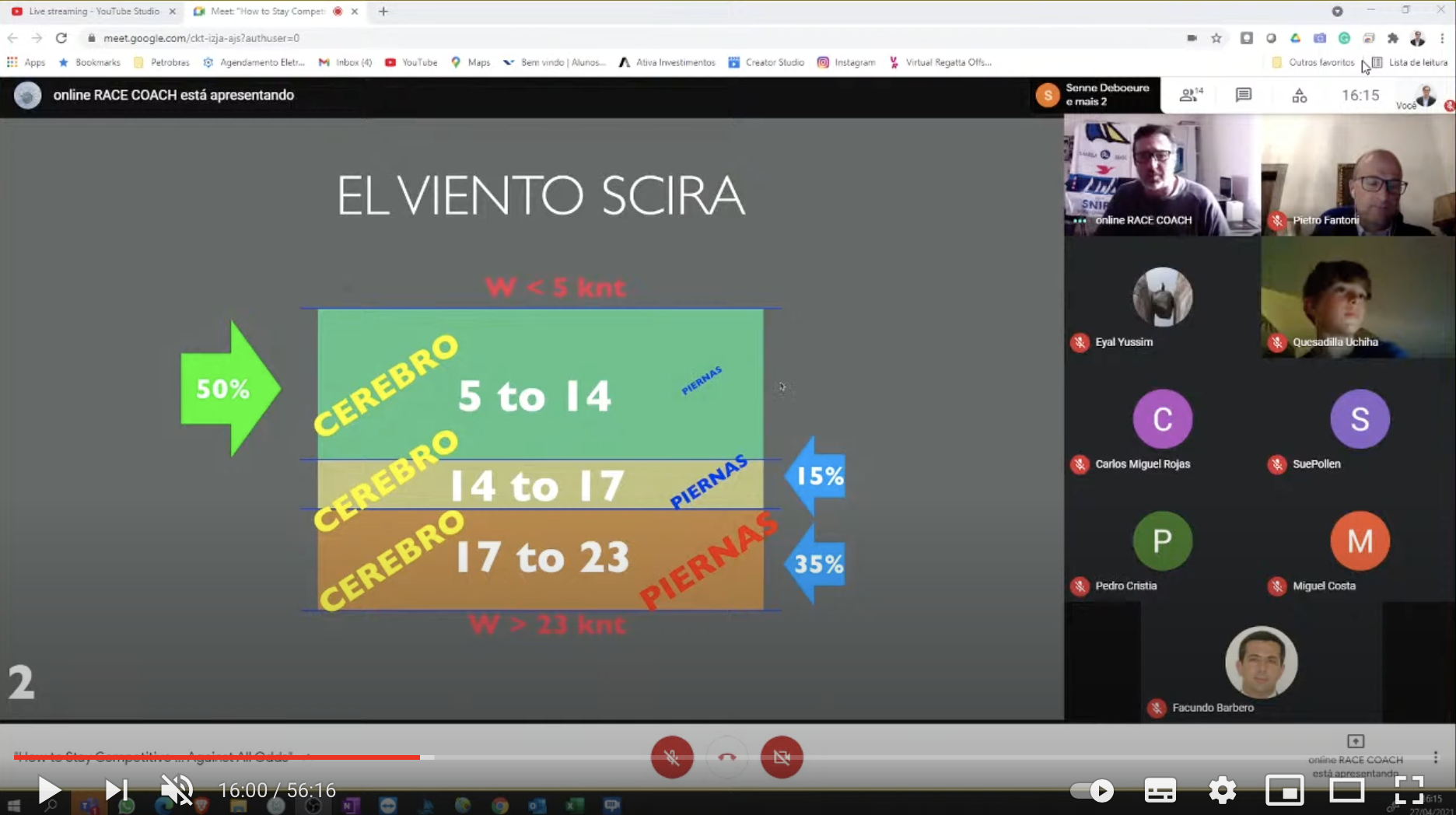
0 comments